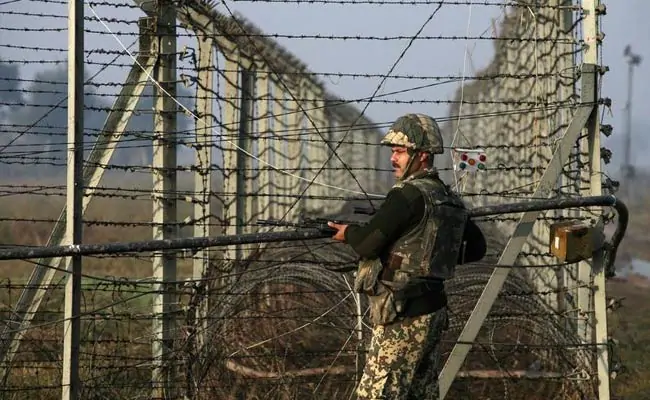In today’s media savvy environment world believes in what is told, propagated and
professed stridently. Actual narration of the occurrences and events are always relegated as a lesser reality or even a lie. Until recent years India has been moderately dominating Pakistan by successfully propagating its twisted yet well-knitted version through network of hysterical and frenzied media channels. Both neighbours have their own versions of previous wars over the time it has become difficult to sift facts from fiction.
People of both the rival countries follow the most jingoist and most fictional narrative rather than believing in what happened. However, this time BJP has failed to create traditional hysteria for war in India. There is a cleavage of diverse opinion amongst political parties and so is the media split into smaller fragments. Global power
struggle in this region may create a situation which is dangerous for everyone. By war we do not mean a traditional Indian wedding with fireworks which may look glittery for war pipers. Mere mention of war in an uneven playfield means a lighting a match over stockpile of nuclear weapons.

Non symmetry of force pushes forward fears of MAD (Mutually Assured Destruction)
creating scare of total annihilation of mankind from face of the earth. Nuclear capability which was meant to prevent wars between India and Pakistan, seems to have lost the ‘safety pin’ status of being a credible deterrent. On the contrary fiery statements and effervescent political voices on both sides now appear to view nuclear capability as an actual weapon of war that could be used against each other when needed. Thanks to limited knowledge about the concept of tactical nukes, it now seems practicable for both or at least for Pakistan, which has possibly attained the capability as a defense compulsion.
India did pitch its concept of Cold Start yet remained apprehensive. Fears are that Cold Start will not only mean an eye to eye face off but also an invitation to fore stand tactical nukes fireworks. It is not a case of military strategy rather a human psyche of ‘who blinks first’ Indian fears have a valid yet insubstantial reason since Pakistan has never agreed a nofirst-use policy, meaning that supposedly if Indian conventional aggression goes beyond Pakistan’s conventional response, India will face nuclear attack from Pakistan.
In present stand-off, India has not only lost its two fighter aircraft but also lost her
prestige and repute as a progressive, secular, militarily robust democratic country. India herself brought Kashmir dispute once again relevant to regional politics which became relatively quiescent for quite some time. The human rights issue stands more prominent and highlighted than ever before and the credit goes to the knee jerk
violent reaction by CRPF, Army and local police jawans in occupied Kashmir immediately witnessed after the Pulwama Attack.
In a short time, India made a long list of diplomatic and defense failures ranging from beating at OIC foreign ministers conference getting captured one of the pilots, unable to make incursions both in air and at sea and failure to handle its own populace priced much to India as a country.
International community keenly observing the stand-off show has reached adverse
conclusions about India which favours Pakistan, at least in the short run. On a tactical level, drawing effective punitive response from Pakistan Army along Line of Control, Indian Army has started to target civilian population indiscriminately, waking up Human Right exponents on both sides of the border. Yet the precise targeting by Pakistan Army is careful about civilians on other side, it has been able to send demoralizing message to the rear formations of Indian Army which are managing significant number of coffins and body-bags each day. Unfortunately, this time for
Indians Americans seems less interested in disciplining Pakistan, since the latter is brokering a deal for Americans on their request for a decent exit from Afghanistan.
There is a moment of fleeting opportunity for Pakistani diplomats. US diplomats cannot issue hard statements to appease India since annoyance from Pakistan imperil their diplomatic and political efforts in Afghanistan. Having noted everything, India has gained as well due to present escalation on borders.
The purposefully engineered chaos by Modi’s government to influence the upcoming elections has worked to an extent that it has created an opportunity for sitting government in India to get maximum votes in the name of religion and communal hate. A quick fix medicine which is sweet to swallow with long term damaging impacts for India. India realizes that there is neither a chance for an outbreak of total war between both the countries nor international determined forces will let this happen, but political success seems satisfactory.
Both India and Pakistan know that limited engagements on working boundary, Line of Actual Contact and Line of Control will never go beyond claimed surgical strikes or limited infiltration operations. So, what is bad in keeping Line of Control hot and illuminated with shelling if it creates a favorable voting trend for BJP in elections.
Besides, these limited skirmishes on borders and fears for an all-out war on all fronts is good for economy, the thriving economy of weapons manufacturers and sellers in international market who are devotedly committed to their flourishing business. They need countries like India and Pakistan to benefit their business by shopping every few years for hightech expensive weapons which they always do at the cost of health and education of both the poor nations after every standoff. So let fireworks be fireworks as nobody wants to disrupt world trade due to a war situation in Indian Ocean, things are destined to settle down sooner or later.














